Click below for answers to some of the most commonly asked questions about the PEO industry.
What is a PEO?
Professional employer organizations (PEOs) provide human resource services for their small business clients—paying wages and taxes and often assisting with compliance with myriad state and federal rules and regulations. In addition, many PEOs also provide workers with access to 401(k) plans, health, dental and life insurance, dependent care, and other benefits not typically provided by small businesses. In doing so, they enable clients to cost-effectively outsource the management of human resources, employee benefits, payroll and workers’ compensation. PEO clients can thus focus on their core competencies to maintain and grow their bottom line.
Why would a business use a PEO?
Business owners want to focus their time and energy on the “business of their business” and not on the “business of employment.” As businesses grow, most owners do not have the necessary human resource training, payroll and accounting skills, the knowledge of regulatory compliance, or the backgrounds in risk management, insurance and employee benefit programs to meet the demands of being an employer. PEOs give small-group markets access to many benefits and employment amenities they would not have otherwise.
How do PEOs help their clients control costs and grow their bottom line?
A PEO’s economy of scale enables each client company to lower employment costs and increase the business’s bottom line. The client can maintain a simple in-house HR infrastructure or none at all by relying on the PEO. The client also can reduce hiring overhead. The professionals at the PEO can provide critical assistance with employer compliance, which helps protect the client against liability. In many cases, the client can pay a small up-front cost for a significant technology and service infrastructure or platform provided by the PEO. In addition, the PEO provides time savings by handling routine and redundant tasks for its clients. This enables the business owner to focus on the company’s core competency and grow its bottom line.
How do employees benefit from a PEO arrangement?
Through a PEO, the employees of small businesses gain access to big-business employee benefits such as: 401(k) plans; health, dental, life, and other insurance; dependent care; and other benefits they might not typically receive as employees of a small company. And, when a company works with a PEO, job security is improved as the PEO implements efficiencies to lower employment costs. Job satisfaction and productivity increase when employees are provided with professional human resource services, enhanced benefits, training, employee manuals, safety services and improved communications.
How many businesses use a PEO?
PEOs provide services to between 156,000 and 180,000 small and mid-size businesses, employing between 2.7 and 3.4 million people.
Sign Up Now To Receive Our Newsletter
Sign Up Now To Receive Our Newsletter

CONTACT VL BEST PEO
(800) 418-8382
Hours of Operation
Monday – Friday: 8:00 a.m. – 5:00 p.m.
Customer Contact Hours
For 24/7 After-Hours Support,
Call (800) 418-8382
Address
1026 SW 9th St, Suite C,Ocala, FL 34471

CONTACT VL BEST PEO
(800) 418-8382
Hours of Operation
Monday – Friday: 8:00 a.m. – 5:00 p.m.
Customer Contact Hours
For 24/7 After-Hours Support,
Call (800) 418-8382
Address
1026 SW 9th St, Suite C,Ocala, FL 34471
